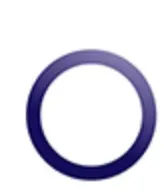我有一个关于CSS3的问题。我不知道如何制作像这样的斜向圆形渐变边框:
 我发现了类似于这个:
我发现了类似于这个:
 我发现了类似于这个:
我发现了类似于这个:
.box {
width: 250px;
height: 250px;
margin: auto;
background: #eee;
border: 20px solid transparent;
-moz-border-image: -moz-linear-gradient(top left, #3acfd5 0%, #3a4ed5 100%);
-webkit-border-image: -webkit-linear-gradient(top left, #3acfd5 0%, #3a4ed5 100%);
border-image: linear-gradient(to bottom right, #3acfd5 0%, #3a4ed5 100%);
border-image-slice: 1;
}<div class="box"></div>但不幸的是,这仅适用于正方形。
任何帮助都将不胜感激。